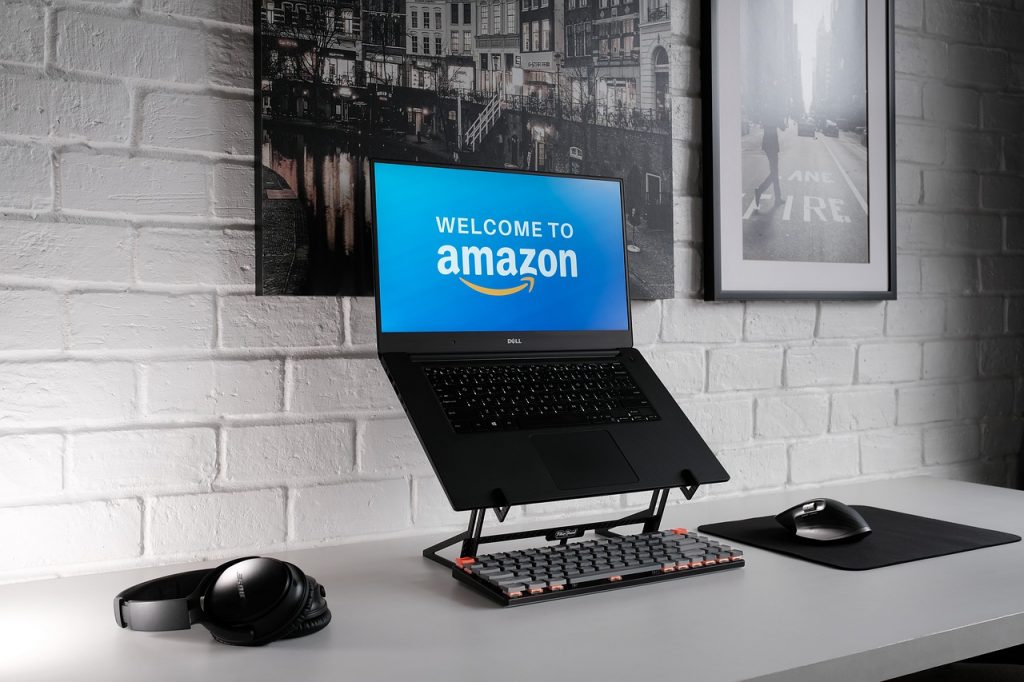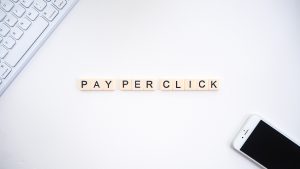Amazon’s PPC advertising, whether it’s in the form of PPC advertisements or product display ads, is currently more popular than ever. It has been reported that Amazon has sold over $2 billion in advertising this quarter, a new high.
Despite Amazon’s year-over-year growth, the company recorded a whopping 139% increase in the most recent quarter. Amazon is expected to be the third-largest digital ad supplier in the United States by 2022, despite the fact that advertising power is expanding.
Amazon advertising is expanding at a quicker rate than previously, making it much more difficult to succeed. As a result, the appropriate approach is critical to outranking your competition in terms of revenue and brand value.
In light of this, we’ve put up this guide to assist you in better understanding Amazon PPC advertisements.
How To Optimize An Amazon PPC Campaigns To Drive Sales?
Your product listing must be well optimized if you want to make excellent sales. When there are so many competitors out there, you may wonder whether your product can succeed in the marketplace.
The good news is that there are a few tweaks you can make to your product listing to get an advantage over the competition. All you have to do is stick to Amazon’s PPC advertising tactics.
If you’ve never heard of it, here’s a better explanation:
1. Structure your campaigns consistently
Your ad activities have a basic framework thanks to your PPC campaigns. Good or terrible, this might be a good or negative thing. One or more of the following patterns may be seen in most campaign structures:
- By product category (for example men’s shoes, keyboards, cameras, etc.)
- By brand (for example Nike, Adidas, Puma, etc.)
- By top sellers (products that pull in the most sales, e.g. top 10)
Be consistent with your campaigns’ organizing methods, regardless of the strategy you utilize. If you reorganize your company, you may end yourself running the same advertising again. For example, if you run a campaign for a certain brand and another for a specific category, you may see the same goods in both campaigns.
2. Group similar products in the same ad group
Each ad group has a collection of items and keywords. Keep in mind that all items should appear for that set of keywords. You need to choose a collection of products that are relevant to those keywords in order to rank well. As a result, you should create an ad group for all goods that are relevant to those keywords.
Use caution when calculating the profitability of your Amazon advertising campaigns using this strategy. While the goods in the same ad group may have similar keywords, their profit margins might vary widely, which can have an influence on your advertising profitability. Therefore, before beginning any Amazon PPC optimization, you need to determine what an appropriate ACoS for your Amazon advertising would be.
3. Create different ad groups for keywords with different levels of generality
The more items you provide, the greater the number of keywords you’ll need, all of the differing degrees of precision.
Example: A seller has a selection of shoes
- For all shoes, the keyword “shoe” is relevant
- For some of the shoes, the keyword “men’s shoes” is relevant
- For some men’s shoes the keyword “men’s sneakers” is relevant
It would be quite difficult to keep track of which advertisements are displayed for which keyword bids if the keyword “men’s shoes” was included in all ad groups for men’s sneakers, boots, loafers, etc.
For example,’ men’s shoes and shoes for guys’ are two examples of generic keywords that should be included in distinct ad groups. These ad groups, for example, may include the most popular products:
Campaign 1: Men’s shoes for Product Category 1
- Ad Group 1 (“men’s shoes”) for general keywords of that product category (“shoes for men,” “men’s shoes,” etc.) and top sellers;
- Ad Group 2 (“men’s sneakers”) for specific keywords (“sneakers for men,” “men’s tennis shoes,” “men’s joggers,” etc.) and corresponding products;
- Ad Group 3 (“men’s boots”) for specific keywords (“men’s boots,” “hiking boots for men”) and corresponding products.
4. Let Amazon identify relevant keywords for you in an automatic campaign
Set up both an automated and a manual campaign for the same items. You should wait a few days/weeks before evaluating which search phrases produced the greatest purchases from the automated campaign. After that, use these keywords in your manual ads to get the best results.
The following are our recommendations:
- automatic campaign with 1 automatic ad group
- manual campaign with 3 ad groups: broad (keyword), exact match (keyword), and ASIN targeting
- manual campaign with 1 ad group for category targeting.
Each of these campaigns and ad groups serves the following functions:
- Research is carried out automatically by the automated campaign.
- Then, using manual campaigns and ad groups (broad match keyword or category targeting), these targets are extracted and refined.
- Exact match keywords and ASIN ad groups, on the other hand, only include the most desirable customers.
5. Optimize listings to ensure ads are shown for all relevant search queries
As a result, Amazon takes great care in ensuring that the advertisements that appear on their site are relevant to its visitors. As a result, only adverts for keywords that appear in the product description may be shown (title, attributes, description, search terms).
Verify that your product listing content does not include any keywords that have received no impressions. Add these keywords to your listing text so that advertising for them may be served if they aren’t already there. This will allow you to reach a bigger audience.
6. Eliminate unwanted search queries to reduce costs
Ads on Amazon aren’t always visible for the same keywords that you’ve bid on as a seller. According to on the match type, your search queries may differ from the terms you’ve typed. There are two ways to avoid paying for things you don’t need:
- Set keyword match types
- Set negative keywords
Amazon lets you pick between three different kinds of matches for its Sponsored Products ads:
Sponsored Product ads may be shown if the query covers all terms that are part of a keyword. This is a broad match. When it comes to word order, it doesn’t matter. Additionally, the method takes into account spelling variants, misspellings, and synonyms.
Phrase Match: When a search query contains the keyword(s) specified in precisely the sequence given, the ad will show. Considered “matches” are similar variants (such as singular/plural).
The ad may only display if a search query matches precisely the term provided. Singular and plural nouns are regarded as equivalent in this context as well.
Negative keywords
Negative keywords may also be added to Amazon listings. For inquiries that include these keywords, your ad will not be shown to users. Unlike positive keyword matches, there is no negative counterpart of the Broad Match option:
- In order for your Sponsored Product ad to be omitted, the search query must match precisely or with a small variation on the negative term you’ve specified (for example, singular plural). In other words, this is the exact opposite of Exact Match.
- Ads will not be shown in the search term includes an ad-blocking negative keyword, either as part of the phrase or as its whole. Phrase Match is the opposite of this.
7. Track your PPC spend based on product performance
Most ad groups have a large number of items that all use the same keywords. For each ad group, it will become apparent over time which goods are most popular.
Your Amazon PPC optimization should be focused on maximizing the number of sales you can generate from that ad group by gradually eliminating goods that aren’t performing well. By focusing your impressions and clicks on goods that are more likely to result in sales, you may save money by not promoting items that have poor conversion rates.
8. Define your target Advertising Cost of Sales (ACoS)
At the very least, you should have a goal advertising cost of sales (ad expenditure divided by ad sales) in mind. It depends on what you’re trying to accomplish with your campaign. In the event that your primary goal is to make a profit, the profit margin will serve as the basis for determining your target amount.
Between 5% and 15% is the normal range for advertising costs of sale. Although advertising a new product and increasing its organic awareness may need paying more for sales or even taking a loss in the near term, it may be worth it in the long run. If this is the case, you should aim for a cost of sale of up to 100%.
9. Track and optimize your bids (CPC)
Depending on the keyword, a different goal bid is recommended. That’s why manual campaigns let you manage each individual keyword’s bid independently. When analyzing bids, you’ll want a good deal of information to work with. You should wait at least a week before altering bid prices for the same item. Optimization of CPC bids follows a few broad rules:
- If the ACoS (average cost of sale) for a term is higher than the goal number, you should drop the bid to see if the ad spends to sales ratio can be improved.
- To evaluate if the ad’s reach and sales can be increased by boosting the bid price, the ACoS must be lower than the goal value.
- You may try whether a higher bid will help your keywords to become more active if they aren’t making any sales or receiving too few impressions. A more desirable (higher) placement may be obtained by placing a greater bid, hence increasing the number of impressions and clicks.
- To avoid wasting time and money on keywords that don’t bring in any revenue, just remove them from your bid strategy.
In order to find the optimal balance between ad spend and revenue, campaigns should be tweaked on a regular basis.
10. Start bidding on new keywords with a higher price
At least $0.75 should be your first bid price for each new term you’re introducing to your campaign. For the time being, Amazon cannot use click data from newly created keywords to determine ad placement. A larger bid price must be applied to the keyword in order to get it started and create some impressions and clicks. In order to determine the best bid price, this offer price may typically be dropped once some click history has been accrued.
What are the Benefits of Using Amazon PPC?
Using Amazon’s PPC may help you increase the exposure and sales of the things you sell on Amazon. Using Amazon PPC has the following advantages:
- It helps you gain higher product rankings.
- It helps widen your reach and attract actual buyers.
- You’ll only pay for the ads when shoppers click on them.
- It has a feature that allows you to easily measure your goals and success.
- You have the option to have full control over the ads.
Why Should You Invest in Amazon PPC Optimization?
Using PPC is simple, but selecting the proper keywords and coming up with the best plan may be difficult. You, of course, want to get your money’s worth out of your Amazon PPC ad campaign, and you can do so by adopting the ideal structure for your campaign, effective keyword optimization, and intelligent bidding.
A few things to keep in mind while optimizing PPC ads. When it comes to optimizing numerous campaigns and advertising at once, one option is bulk optimization. Campaigns may be combined, filter settings can be adjusted, and keywords that work and don’t work can be found.
To discover which phrase/exact match campaigns are most effective, keyword bids may be raised or lowered according to a plan for manual marketing. There’s also a negative keyword option that enables you to remove product-related keywords that don’t lead to sales.
How Does Bidding Work in Amazon?
Ad positions on product listings and search results may be won using the PPC approach. For your items to appear in the Amazon PPC results, you must bid on relevant keywords.
Additionally, you have the option to track the performance of your sponsored items using various configuration options. Keyword bids are the most important factor in sponsored placements if you’re competing with a similar product. A similar product to yours in terms of pricing, features, and customer feedback is referred to as a “competitive” product. To win the Amazon ad bidding auction, you need to have the highest keyword bids.
Second Price Auction
Amazon’s PPC bid auction uses a second-price auction. When all other factors are equal, the highest bidder will always win the auction. Using the example of “leather notebook,” your keyword bid for the phrase is $1.00, while the next highest bidder is just $0.95. Your CPC, or cost per click, will be set at $0.96. (cost per click)
Amazon Campaign Bidding Strategies
Amazon’s campaign bidding technique is another aspect that might influence your bids. Amazon’s algorithm allows for either a dynamic or fixed offer. Amazon reduces your bids for dynamic bids (down only) if your ad does not convert into sales. It is also possible to set dynamic bids (up and down) so that Amazon may boost your bids at times when they are most likely to produce sales and reduce them at times when they are less likely to. For campaigns with fixed bids, you have complete control over increasing and reducing your bids.









